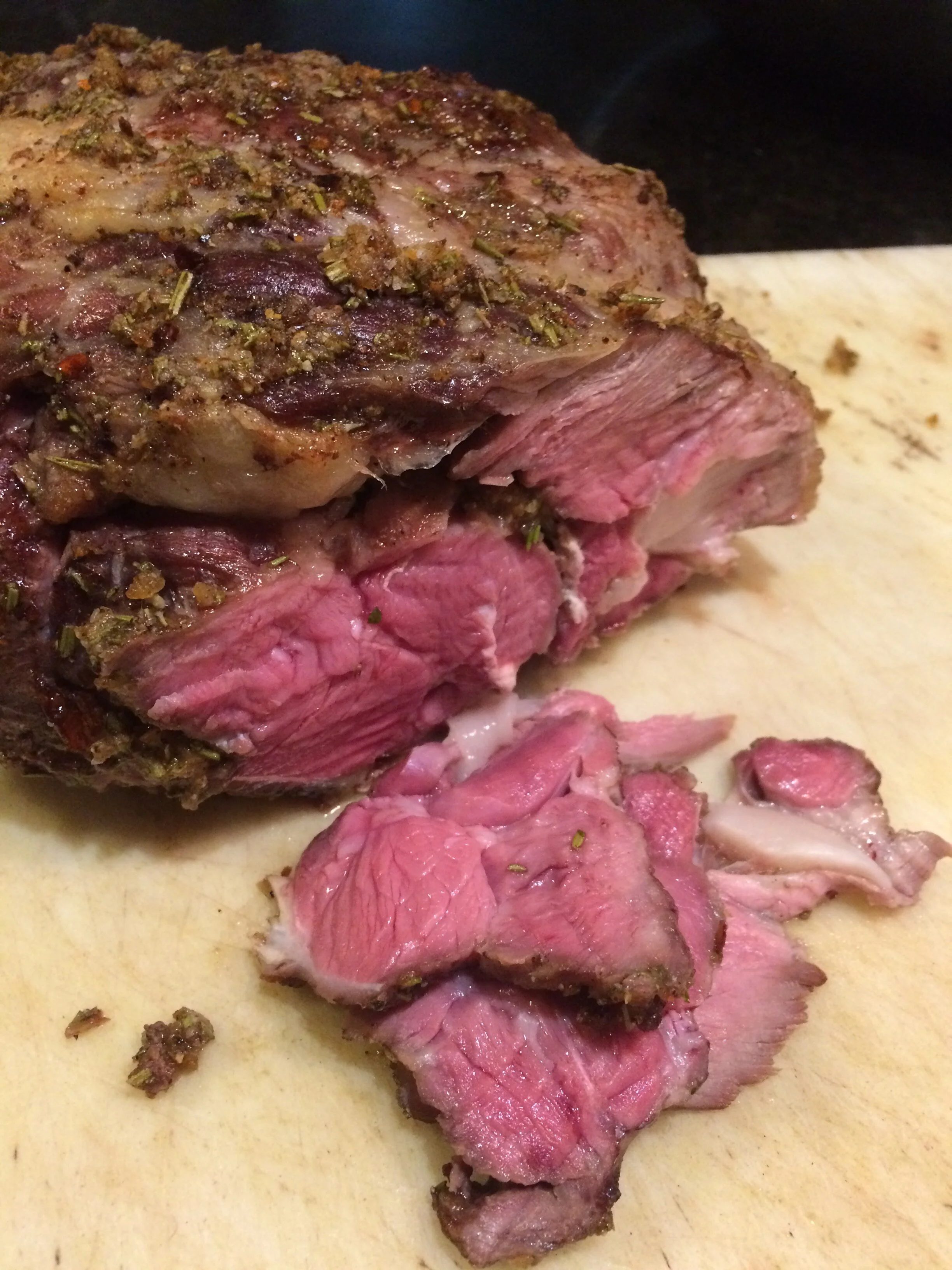The thing you didn’t even know you wanted, but once you discover it, you’ll be performing this simple kitchen miracle regularly…
Sublime.
Think goat is gamey? Think again. Milder than lamb, but still has that slightly exotic flavor. Lean, tender, delicious—and simple to prepare!
Pastured Meats are Better
Better for you, better for the animal health, better for the land. Tastier, too—has an intensity and integrity of flavor that feedlot meats lack. Did you know that goats are browsers? They forage our blackberries, wild roses, maple shrubs, burdock, plantain, and madrone bark, along with grazing the pastures.
Here’s How:
Goat works really well with a play on Mediterranean flavor profiles—fresh herbs like mint and rosemary, cracked black peppercorns, a citrus peel (lemon or orange), and lots of garlic—finely mince your ingredients, and add an acid (lemon juice or balsamic vinegar), kosher salt, and olive oil—mix to make a pesto-consistency paste, which you’ll rub on the meat. (In fact, pesto works fine as a rub, too.) Rub the meat generously the night before (works fine if you do it a couple hours before cooking, or up to 2 days ahead) and refrigerate.
If you’re working with a de-boned leg, you can rub it and tie it up with butcher’s twine, getting your rub on all of the exposed surfaces. If you’re working with a bone-in leg, you’ll get extra flavor and drama from the bone (plus you could make a bean soup broth later), and you won’t need to tie up the leg.
To cook, we never get tired of the simplicity and perfection of the long, slow roast and reverse-sear method: roast as low as your home oven will go (200º or thereabouts), temp occasionally with a probe thermometer, pull the roast when you reach 110-120º (2-4 hours),let it rest on the counter while you crank up the oven to about 500º, and wait 20 min for it to reach temp. Sear the roast in the hot oven for about 15 minutes, until browned and crisped on the outside, and internal temp is 130-135º.
Serve it on salad, couscous, or roasted/mashed roots. Finish with a little pesto, or use our goat bone broth to make a rich demi glace. Leftovers make great sandwiches and wraps.



